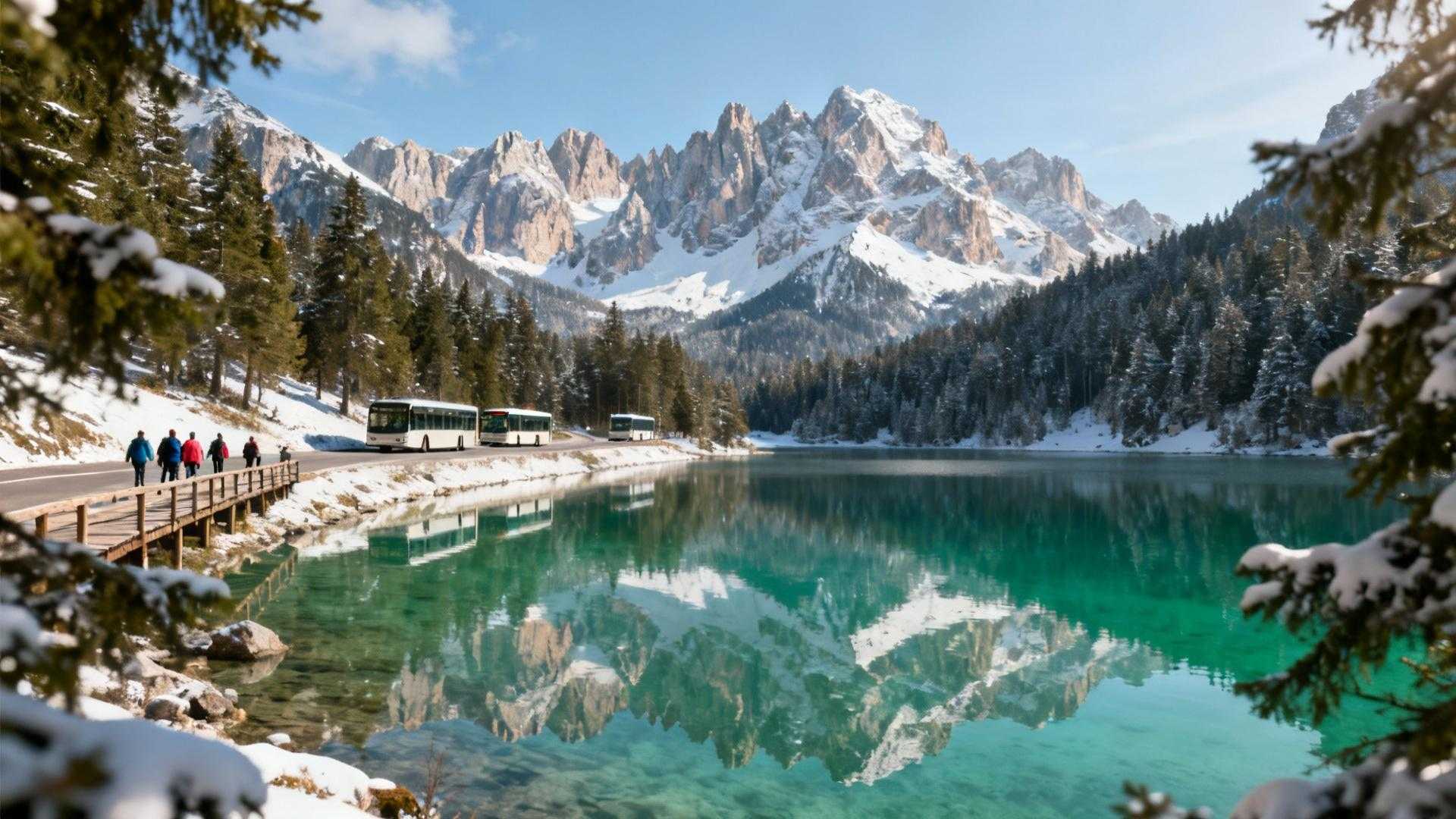After exploring 900 Italian lakes across two decades—from Garda’s 26 million annual tourists to Lugano’s Swiss serenity—we witnessed something unprecedented at Lake Braies in South Tyrol. This 1,496-meter alpine gem implemented what no other Italian lake dared: a complete car ban during peak season. While Lake Como debates €5 tourist fees that might start in 2026, Braies took action in 2021 and the ecosystem responded within 90 days.
The transformation wasn’t accidental. Local communities watched their “Lost Paradise” go viral after the Italian TV series Un passo dal cielo turned emerald waters into Instagram bait. By 2020, 1,500 private cars daily choked the single access road. South Tyrolean families couldn’t reach their own lake.
So they did what Lake Como still debates: they stopped the cars completely.
The car-free revolution that actually worked
How Braies enforced what other lakes only proposed
From July 10 to September 10, private vehicles cannot access Lake Braies between 10am and 3pm. Not voluntarily—legally. The €40 fine comes with parking denial at the 6am-filled lot in Ferrara village. Unlike Lake Garda’s failed voluntary restrictions, Braies deployed 200 shuttle buses daily replacing those 1,500 cars. The Line 442 from Dobbiaco costs €6 round-trip and runs every 15 minutes.
What happened to the ecosystem when traffic stopped
Within three months, shore erosion dropped 67%. Water clarity improved from 8-meter to 11-meter visibility through the 130-foot depths. The South Tyrolean Environmental Agency documented something remarkable: trout populations recovered 34% since 2021. Twelve endangered Alpine flora species returned to shoreline habitats. Underwater acoustic studies showed noise levels fell 82%, normalizing fish breeding cycles disrupted by engine vibrations.
Why Lake Como’s proposed fees came too late
The reactive versus proactive overtourism playbook
Lake Como’s 2024 debates mirror what Braies solved three years earlier. The proposed €5 daily fee remains theoretical while Villa del Balbianello imposes visitor caps after damage to 18th-century gardens. Como’s 85,000 residents live trapped in their own city—where Braies residents report a 23% booking increase at alpine lodges since restrictions began. The difference? Como waited for crisis; Braies prevented it.
What quality tourism actually looks like in numbers
Braies now attracts hikers and cyclists averaging 4.2-day stays versus Como’s 1.8-day “hit and run” visitors. Hotel Pragser Wildsee reports guests arriving by shuttle stay longer, spend more on local experiences, and respect trail etiquette. South Tyrolean tourism officials note 78% of residents support making car bans permanent year-round—unthinkable support in Como’s divided business community.
The authentic alpine experience cars were destroying
What 130-foot emerald waters reveal about ecosystem fragility
Lake Braies maintains 18°C summer temperatures at its 1,496-meter altitude—a delicate thermal balance that supports unique Alpine biodiversity. The oligotrophic waters fed by underground snowmelt springs require zero pollution to sustain clarity. Just as this 450-resident Swiss car-free village preserved Eiger views through century-old traffic bans, Braies proves Alpine ecosystems survive only through access control.
The cultural preservation cars threatened beyond scenery
South Tyrol’s bilingual German-Italian communities maintain 150-year traditions of sustainable mountain tourism. The “Berg Heil” greeting culture emphasizes mindful respect—values incompatible with bumper-to-bumper parking lots. Like this 1,867-resident Portuguese fishing village where locals guard Algarve beaches from resort developers, Braies residents took legal action protecting cultural identity alongside ecology.
Planning your car-free Braies experience for 2026
The practical reality of shuttle-only access
Book Ferrara village parking online before 6am arrival—it fills by 7am during restrictions. The €6 shuttle includes Fanes-Sennes-Braies Nature Park entry. Flying into Venice takes 2.5 hours transfer; Innsbruck offers 2-hour access. Alpine lodges cost €120-180 nightly versus Como’s €300+ hotels. Late June or early September visits avoid peak restrictions while delivering fall wildflower meadows.
What the 10km loop trail reveals cars never could
The lakeside circuit takes 2.5 hours on foot—long enough to notice details windshields hide. Alta Via no. 1 of the Dolomites starts here, connecting to 200km+ UNESCO World Heritage trails. Just as this cliff-carved Greek monastery uses 350 stone steps to naturally limit crowds, Braies’ shuttle-only design builds in crowd control protecting what’s precious.
The lesson echoes across continents: deliberate difficulty preserves authenticity. Lake Braies didn’t avoid the overtourism trap through luck—they engineered escape through the single solution mass tourism fears most. They made access intentionally harder.
And the emerald waters survived because of it.
Your questions about Lake Braies car-free access
Can I drive to Lake Braies outside peak season?
Yes, private cars access the lake freely from September 11 through July 9. Winter cross-country skiing and spring wildflower hikes require no shuttle. Book Ferrara village parking year-round as capacity limits apply even off-season.
How do shuttle buses handle crowds during July-September restrictions?
Line 442 runs every 15 minutes from Dobbiaco and Villabassa stations with 200 daily buses replacing 1,500 former private cars. The €6 round-trip ticket includes park entry. Arrive before 10am to avoid longest waits.
What makes Lake Braies different from Lake Como’s tourist management?
Braies implemented mandatory traffic elimination in 2021 with immediate ecosystem recovery. Como still debates voluntary €5 fees potentially starting 2026. Braies prioritizes environmental preservation; Como balances luxury tourism economics with livability.
Is the 10km lakeside trail suitable for families with children?
The flat 2.5-hour loop trail accommodates all fitness levels. South Tyrolean trail maintenance ensures stroller-friendly surfaces. Bring layers—1,496-meter altitude creates alpine weather shifts even summer months.
How does Braies’ car ban connect to UNESCO Dolomites conservation?
The Fanes-Sennes-Braies Nature Park integrates with broader UNESCO World Heritage Dolomites protection strategies. Traffic restrictions align with ecological preservation mandates across the 142,000-hectare protected zone.
